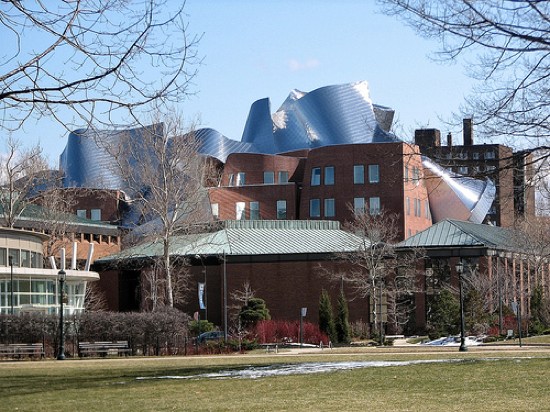
An executive MBA degree isn’t cheap. Want to go head-to-head with top executives at the University of Pennsylvania’s Wharton School? That’ll run you $205,200 over two years – and the price tag is nearly as high with Columbia Business School and Northwestern University’s Kellogg School of Management. Even if you’re fortunate enough to be sponsored, you’re still devoting 20-40 hours a week to classes, projects, and travel – time that’s often commandeered from family, interests, and rest.
Why do it? Everyone has a different motivation. For some, an MBA is finishing school, a rite of passage for future leaders to fill their gaps and prepare for the c-suite. Others view it as a path to gain security and credibility in their own firms – or the know-how and flexibility to switch careers. Then, there is the financial component, with a degree sometimes doubling earnings over time.
TOP 10 EMBAs TOP $200K AFTER GRADUATION
In The Economist’s annual executive MBA rankings, which were released in July, post-graduation pay accounts for a quarter of each school’s rank. Not only does The Economist report on pre- and post-MBA pay, but it also looks at how much earnings rise for graduates at over 50 EMBA programs. Make no mistake: these degrees are some of the best investments in the market today. As The Economist reports, the average cost of a Top 10 EMBA program is $133,000. On average, their pay rose 51%, with graduates collecting $210,000 a year – excluding bonuses and other compensation.
The data was based on two web-based surveys, which were administered by The Economist and submitted in March and May. One was completed by EMBA programs themselves, which focused on quantitative measures. The other was targeted to recent alumni, with 8,000 respondents ultimately returning data ranging from satisfaction rates with faculty to pay growth.
And pre-MBA pay too. At 41 of the 65 EMBA programs ranked by The Economist, students started at business school earning $100K or more, on average, before starting classes. The highest pre-MBA base pay belonged to Case Western Reserve University’s Weatherhead School of Management, where EMBAs were banking $229,258 – perhaps a nod to the caliber of students attracted to the school. Another four EMBA programs – the University of Michigan, Yale School of Management, Rice University, and the University of Tennessee, boast classes whose pre-MBA pay ranges from $188K-$193K. Overall, 15 schools fielded EMBA students who made $150K or more (with two programs plateauing at the $149K mark).
RICE AND CASE WESTERN RESERVE GRADS EARN MORE THAN RANK SHOWS
Alas, it’s not where you start that matters most, but where you end up. Come graduation, you’ll find 17 programs where EMBAs are pulling down $200K or more. Headlining the list is Switzerland’s IMD Business School at $272,500. To put that number in context, it is a 127% improvement over their base pay just 15 months earlier. With tuition being just $105,720, the school’s cost-to-return ratio is an eye-catcher. That’s particularly true since (as noted earlier) The Economist’s data excludes any compensation outside base pay, which takes traditional perks like performance bonuses and stock options out of the equation.
IMD tends to be an anomaly, however. Remember Case Western Reserve? Technically, EMBA pay here climbs nearly $267K, but that’s just a 16.3% improvement over where their graduates started 21 months earlier. That number is still better than the University of Michigan, whose $211,423 pay at graduation is just a 9.3% improvement over pre-MBA earnings. Aside from IMD and Case Western Reserve, the highest-paid EMBAs, on average, at graduation include Yale SOM ($266,125), IESE Business School ($241,159), ESADE-Georgetown ($237,086), U.C.-Berkeley ($235,824), and the University of Chicago ($232,998). Overall, American-based EMBA programs made up 15 of the 20 highest-paying EMBA programs at graduation.

Case Western’s Weatherhead School of Management
Several programs also yielded much higher base pay than their overall ranking might indicate. Along the lines of Case Western Reserve University, whose second-highest pay is belied by a #31 ranking with The Economist, you’ll find Rice University’s Jones Graduate School of Business. Ranked 37th among EMBA programs, Rice EMBAs are making $230,459 at graduation, good for 8th-best among in the world. The University of Tennessee’s Haslam College of Business (#23 overall and #9 in pay at $228,459) and South Methodist University’s Cox School of Business (#40 overall and #10 in pay at $227,583) also perform much better than their rank might indicate.
KELLOGG-WHU GRADS SEE PAY JUMP 92% WITHIN TWO YEARS OF GRADUATION
That said, the opposite end includes the Northwestern Kellogg-WHU Otto Beisheim Executive MBA program, which ranks 3rd globally, but just 28th in pay $158,768). Alas, pay can be misleading here, as graduates enjoy a 43.3% pay increase by graduation – a jump that rises to 59.3% a year later and 91.9% after two years. The same could be said for top-ranked Yale SOM, whose base pay increase ranked 15th at graduation but doubles after the first year.
In fact, the first and second years after graduation often prove to be when EMBA grads reap the real benefits of their work. A year after earning their degrees, students from 15 EMBA programs experienced pay raises of 50% or more, including Warwick Business (79.1%), IESE Business School (67%), University of Maryland’s Smith School of Business (66.3%), and the University of Chicago’s Booth School of Business (64.8%). After two years, this 50% increase still applies to 12 schools, including UCLA Anderson-National University of Singapore (71.6%), Henley Business School (71%), University of Pittsburgh’s Katz Graduate School of Business (69.5%), and the University of Oxford’s Saïd Business School (68.2%).





Questions about this article? Email us or leave a comment below.